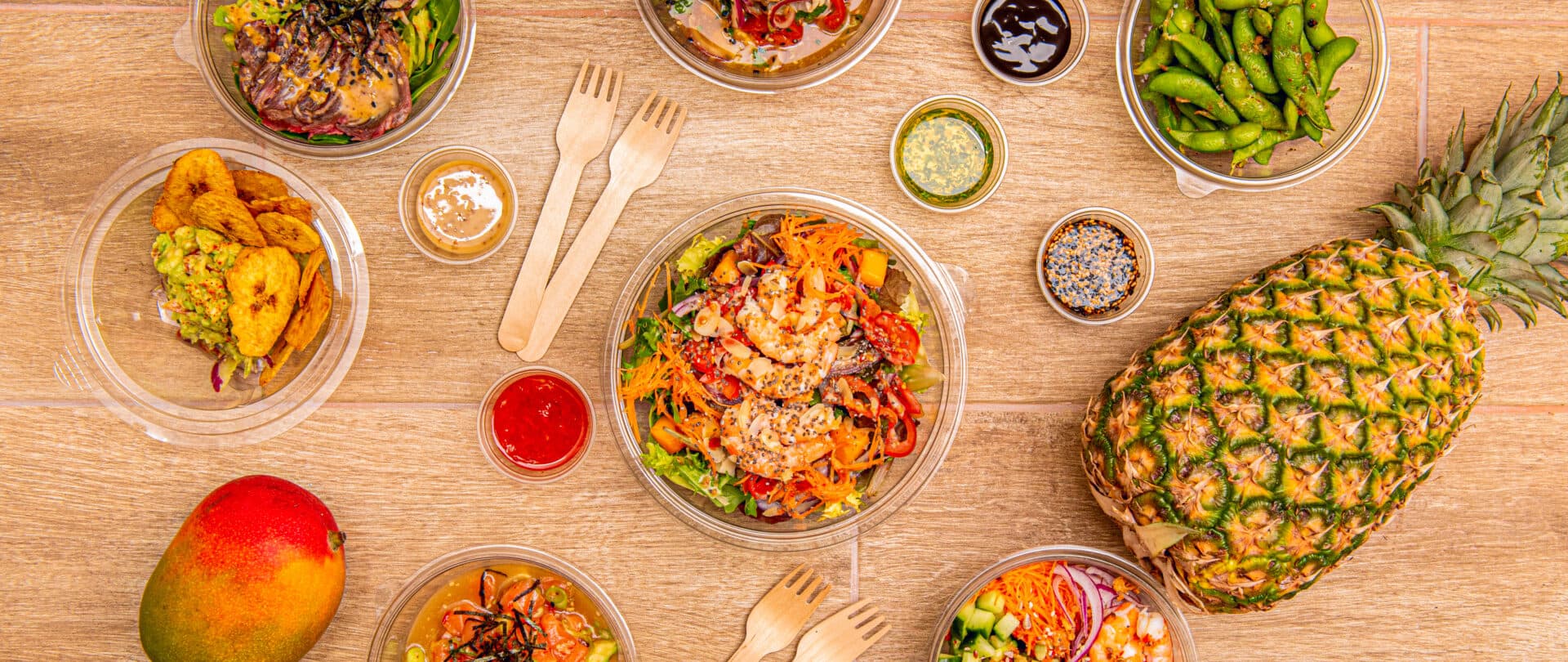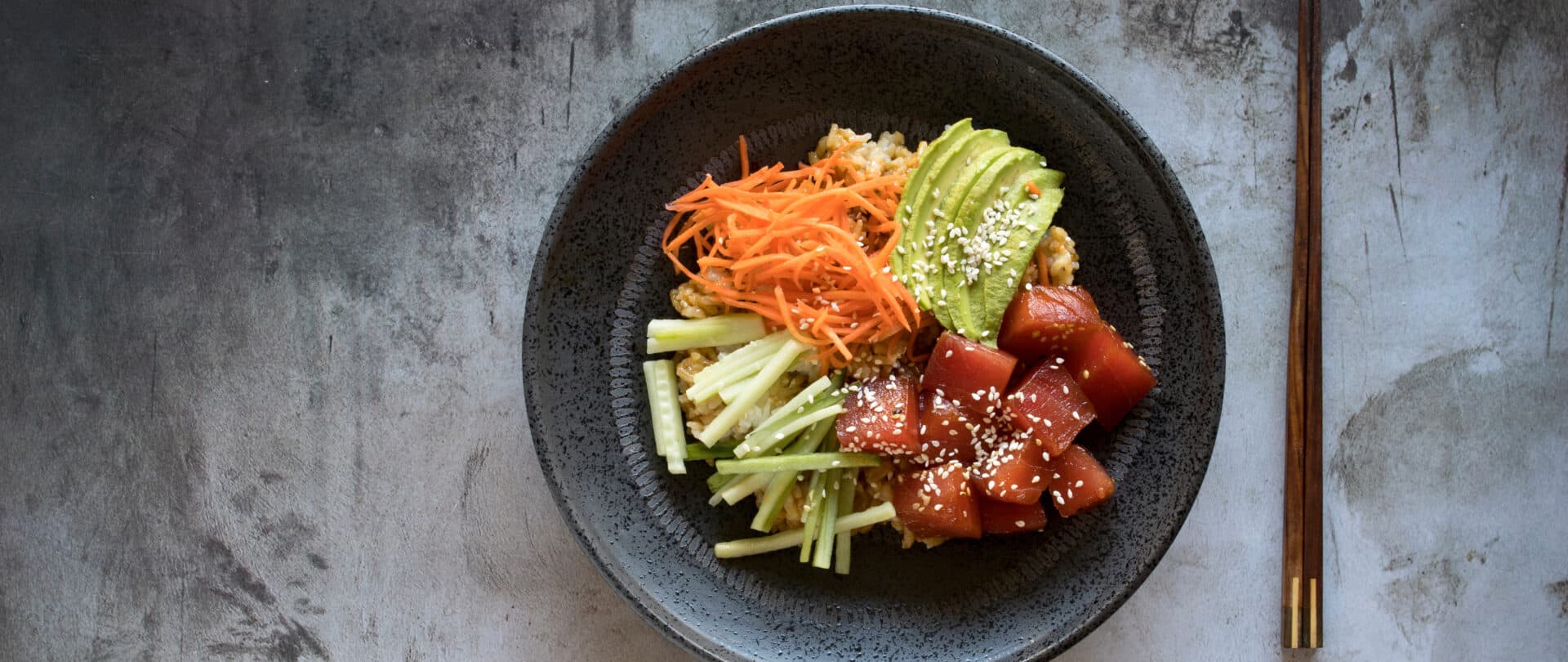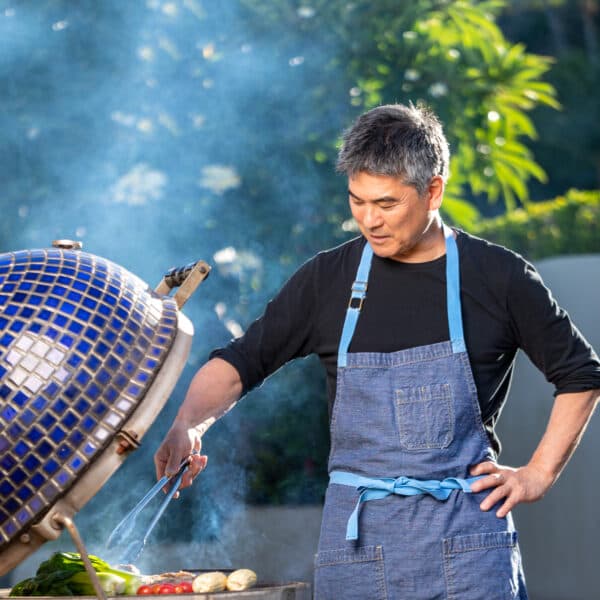Eating Global
Cultural influences on local cuisine
BY Krystal Kakimoto
Hawai‘i, the melting pot of the Pacific, is home to people from all corners of the planet. They’ve brought their rich cultural histories and time-honored family recipes to create what’s known as local cuisine. Looking back on Hawai‘i’s alluring history, we see how local cuisine came to be and why it’s so important to the people of Hawai‘i.
Prior to the 19th century, the major ethnic groups in Hawai‘i were Native Hawaiians and Europeans. This changed drastically when sugar and pineapple became big business in the islands. With cheap land, high demand for products, and reliable steamship transportation to the mainland, plantations needed to find adequate labor to work the fields. The Hawaiian population was decimated by disease brought by European settlers, and the remaining Hawaiians opted to live off the land by farming and fishing, rather than work on plantations.
The first ship of contracted workers from China arrived in 1852, followed by the Japanese in 1868, the Koreans in 1903, and the Filipinos in 1906. Portuguese whaling ships also arrived, and by the late 1800s, Portuguese sailors and fellow immigrants continued to settle in the islands. It’s estimated that nearly 400,000 contracted workers came to Hawai‘i from 1850 to 1930. Workers were housed in camps separated by ethnic group in efforts to maintain their ethnic identities, but also to hinder their abilities to unionize. Work days began before the sun was up, and their backbreaking work under the hot Hawaiian sun was grueling to say the least.
Lunchtime provided the workers with something to look forward to and it was also a time the different ethnic groups mingled. Sitting in the shade of a tree, the workers opened their lunch containers and while enjoying their meal, they would also exchange food with one another. This generous act of sharing precious food helped them to appreciate food from the other cultures and also laid the foundation for the local cuisine enjoyed in Hawai‘i today.

Manapua
Brought to Hawai‘i by Chinese immigrants, the first manapua was reminiscent of char siu bao or barbequed pork-filled rolls. The yeast dough was filled with a savory pork filling and rolled into a ball. Once steamed or baked, the roll became a warm lunch on the plantation. The name comes from the Hawaiian name mea ‘ono pua‘a meaning “delicious pork thing.” Manapuas are still popular to this day and can be found everywhere from Chinese dim sum restaurants to grab-and-go shops like 7-Eleven. While char siu pork is still a popular flavor, new fillings include curry, sweet potato, and even pizza.

Bento
The bento dates back to the late Kamakura Period (1185-1333) in Japan when people on hunting trips or long journeys would take cooked and dried rice called hoshi-ii stored in small bags with them as takeaway meals. It wasn’t until the Azuchi-Momoyama Period (1568-1600) that we see bentos of lacquered boxes similar to the bentos of today. When Japanese immigrants came to Hawai‘i to work on the sugar and pineapple plantations, they brought with them the tradition of packing single-portion lunches so they could eat quickly and not have to return home to cook a meal. Stackable aluminum tins called kau kau tins (kau kau means food or let’s eat in Hawaiian Pidgin) were carried by plantation workers. The bottom layer usually held rice and some pickled vegetable. The top layer usually held the entrée, which might have been leftovers, canned meats, or scrambled eggs. After the end of the plantations, lunch wagons began serving meals on paper plates, the predecessor of the island favorite “plate lunch.”

Kimchi
Visit any Korean restaurant and you will find their beloved national dish, kimchi (or kimchee). Originally, kimchi was a mixture of cabbage and salt that was fermented in underground jars as a way to store vegetables for the cold winter months around the 7th century—basically, pickling the vegetable for future consumption. The red chili pepper, one of the main ingredients for any type of kimchi, wasn’t introduced until early 17th century by the Japanese after their invasion in 1592.
On the plantations, families made batches of kimchi to eat with nearly every meal, either as an accompaniment for rice, or cooked into dishes such as porridges, stews, soups or savory pancakes. Today, kimchi is offered as a side dish at restaurants across Hawai‘i, and can be found in every major grocery store and flavors everything from ramen noodles to different types of poke (cubed fish). With well over 100 varieties to choose from, there is a kimchi style for every palate, from nappa cabbage and radish to scallions and cucumbers. Kimchi has also been dubbed a superfood for its health benefits and has become a top food trend of late.

Adobo
Adobo, the unofficial dish of the Philippines, was created out of the need to keep meats fresher longer. Filipinos would marinate meat in a mixture of vinegar and salt, braise the meat, and then simmer it in the sauce. It wasn’t until the Chinese traders introduced soy sauce to the Philippines that the more modern marinade of vinegar, garlic, and soy sauce emerged. Adobo is the Spanish word for “marinade” or “seasoning,” and it’s a flavor that pairs well on meat, pork, and even in fish dishes. Today adobo dishes are found at any Filipino restaurant, but it’s also a flavor that many chefs experiment with to create interesting fusion dishes.

Malasada
The first Portuguese immigrants arrived in Hawai‘i during the 19th century from the Azores and Madeira. The initial Portuguese whaling ships brought a few hundred sailors; later in the same year, about 3,300 more plantation workers were brought to Hawai‘i. Around 1887, there was an estimated 10,000 Portuguese in Hawai‘i bringing not only their food, but also their Roman Catholic religious traditions. One community tradition for the Portuguese was using all the butter and sugar before Lent by making malasadas. Malasadas, from the Portuguese word mal-assada meaning “under-cooked,” are deep-fried, hole-less donuts rolled in granulated cane sugar with slightly crispy exteriors and light, fluffy interiors. Popular pre-Lent celebrations of Mardi Gras, Shrove Tuesday, and Carnival occurred all over the world, but in Hawai‘i this celebration was known as Malasada Day during the 19th century. Today, the traditional malasada rolled in sugar is still popular, but there are other delicious versions filled with custard, chocolate, and even haupia
While the Hawaiian Islands are far removed from other civilizations, the cuisine is no less global. Take a delicious journey through history, and savor all the delicious diversity the Aloha State has to offer.



